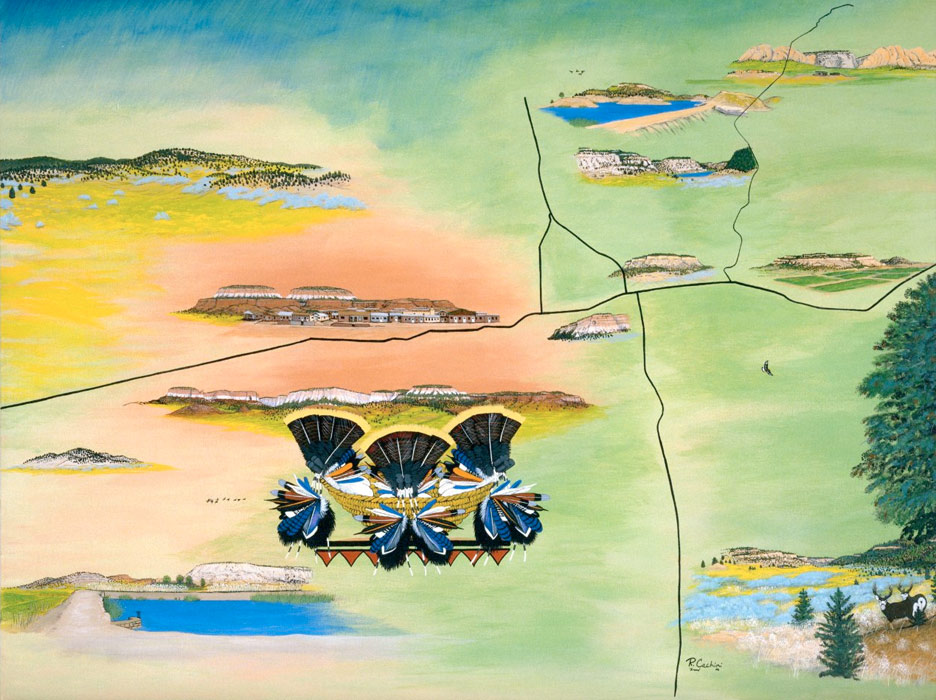The maps we know today are rooted in an imperialist and colonial world view. Territory is regarded as property, to be owned or occupied. This has not only shaped our idea of mapping, but also how we understand the concept of land. However many different practices of designing maps exist outside of this imperialist world view. A:shiwi Map Art is an initiative of the Zuni people in New Mexico, the United States. Sixteen Zuni artists have been commissioned to reimagine the cultural history of the Zuni people through native mapping. Watch the documentary on Emergence Magazine, a great informative piece by Adam Loften and Emmanuel Vaughan-Lee.
‘Discovering’ the Inuit
The arctic region of Northern Canada has been home to the Inuit for thousands of years before Europeans ever set foot there. During the 1950s the semi-nomadic Inuit were forcefully relocated from their hunting grounds to missionary schools to be ‘civilized’ leading to the many problems Inuit communities face today; a lack of employment, high suicide rates, and alcoholism. Which is why there was much protest when Ungava gin, a company with no Inuit staff, used Inuit culture to promote their alcoholic product in 2013 using the slogan ‘Discovering the Inuit’. Inuk artist Stephen Puskas pointed out inaccuracies in depicting Inuit culture and accused the brand of appropriating Inuit culture to sell alcoholic beverages, with blatant offensive imagery. Inuktitut syllabics, one of the orthographies used for Inuktitut, the language of the Inuit, are used as meaningless ornaments around the label. In the campaign faux-Inuktitut is used as a typeface. What’s interesting about the ornamental ‘exotic‘ use of Inuktitut syllabics, is that the orthography itself was developed by Christian missionaries in mid-19th century, but has since become part of the cultural heritage. Since the complaints, Ungava gin apologized and have taken the video and images offline.

